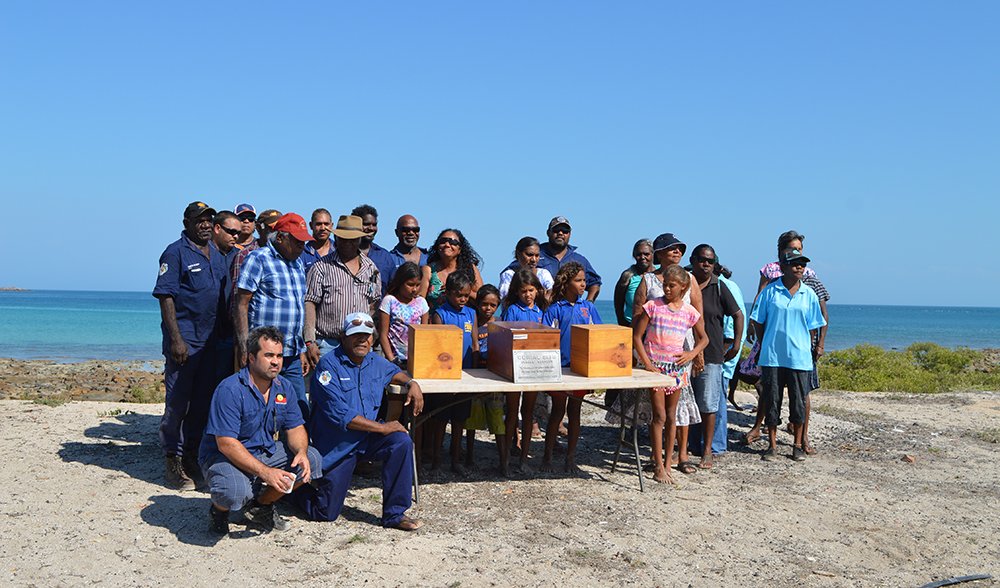Ancestral remains returned to Kimberley traditional owners

The ancestral remains of three Bardi Jawi people stolen in the 18th and 19th centuries have been returned to their original resting places in northern WA.
It has taken years to organise the return of the ancestral remains, which were removed illegally and later acquired by institutions in South Australia and Austria.
The long-awaited reburial ceremonies took place last week on the Kimberley coastline.
The Kimberley Aboriginal Law and Culture Centre’s repatriation officer, Neil Carter, organised the ceremonies, and says it was an emotional moment for the Bardi Jawi people.
“Aboriginal people feel that if the remains are not brought back and put back into the country from where they were stolen, their spirits won’t rest,” he said.

Bardi Jawi people gathered on a Kimberley beach around boxes containing ancestral remains, repatriated from South Australian and Austrian institutions. (Credit: National Museum of Australia)
Ceremonies mark return of ancestral remains to country
The first ceremony marked the return of two skulls and a jaw taken in 1892 by a pearling captain and collector named Henry Hilliard, who took the bones when he came ashore at Cygnet Bay on the Dampier Peninsula.
Over a century later, the skulls have been returned to Bardi Jawi country in a ceremony that saw them transported by boat across Cygnet Bay and placed in a cave, where they’ll now stay.
“There were a lot of emotions; people were feeling anger that the remains were taken away in the first place, relief that the remains were home, and then finally closure,” said Neil.
A second ceremony took place the following day at Pender Bay, where a full male skeleton was taken in 1935 by Father Ernest Worms, a Pallotine Catholic monk, and passed onto a museum in Vienna, Austria.
When Father Worms found the remains they were wrapped in paperbark in the fork of a tree – a traditional form of burial.
The skeleton was brought back to Australia a few years ago and has now been returned to Pender Bay.
RELATED CONTENT
- OPINION: Return Aboriginal sacred objects
- DNA confirms Aboriginal culture one of Earth’s oldest
- Top 10 Aboriginal bush medicines

